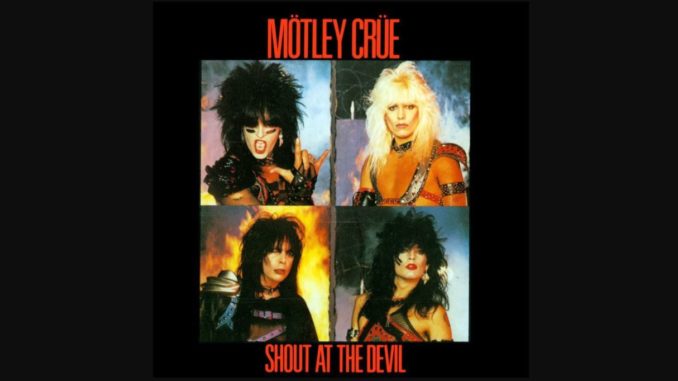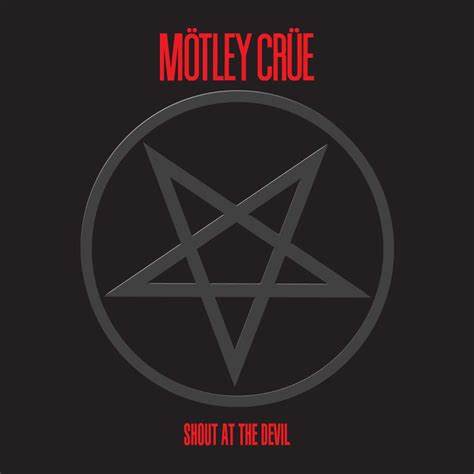
As the saying goes: controversy creates cash. This has been proven time and time again. Given that, Mötley Crüe should probably have been rich from the get-go.
Something had already started with the first album Too Fast For Love (1982). The band were infamous hellraisers, but they also had catchy songs in their arsenal. It was more than enough for the American metal scene to start taking notice.
The band came along at the perfect time. Metal was on the rise, and the Crüe became part of that upward trajectory. There seemed to be no end to how far metal as a movement could go, and within a year a metal album topped the Billboard charts for the first time (Quiet Riot’s Metal Health). Other albums followed, and metal grew to get its own festivals, TV shows and movies. Consequently, record companies started putting big budgets towards promoting their own metal bands.
Elektra/Asylum was not at all a ‘metal’ label. Their main artists were The Eagles, Linda Ronstadt, John Fogerty, and Bob Dylan. They did however – amazingly – have Mötley Crüe. When the label wanted to get in on the metal action, Mötley Crüe had no real in-house competition for the PR budget. They became Elektra/Asylum’s metal band almost by default, but they fit the bill very nicely. The work bore fruits, and the band’s rise was sharp.
Their breakthrough came with the release of their second album Shout At the Devil on 26 September 1983. This is an excellent album in any case, considered their best by the majority of fans. Unquestioningly one of the great metal albums of that era, although the controversy surrounding it would probably have gotten them attention in any case. As it was, the combination of quality music with dangerous imagery/subject matter had the same effect as adding fuel to a fire.
The album title (and title track) was always going to be trouble in America, with accusations of Satanism and devil worship being very strong. This was an issue for several metal bands, who used fantastic imagery to fuel imaginations, sometimes causing similar uproar. Metal bands sought to appear dangerous, which means some of them had a calculated approach to their use of satanic imagery. Other bands got caught in the crossfire.

In the case of Mötley Crüe, nobody could be surprised with the level of attention they got. The album cover only added to the Satanism accusations: largely black, with a band logo on top, the title near the bottom, and a glossy imprint of a pentagram draped in full across the rest.
The way the album starts certainly lives up to its image. The spoken word intro In the Beginning is set to a series of evil-sounding sound effects, serving as an intro to the album itself as well as the title track that follows. It was also used as their walk-on music at concerts.
In the Beginning was written by Nikki Sixx, but credited to Allister Fiend – a character Sixx came up with. Voiced by engineer Geoff Workman, it is a menacing monologue that explains how evil has overcome good, and it was now time to “be strong and shout at the Devil.”
The intro transitions directly into Shout At the Devil. Keeping audience interaction in mind, Nikki made sure the word “Shout!” was repeated several times in the intro and in every chorus. It would have exactly the desired effect – thousands of fists in the air, with everybody shouting out. It was a killer opener.
The song would happily play up to the band’s (and album’s) image at the time, but as they were careful in pointing out every time they were confronted with the title, it was Shout AT the Devil – not WITH. Although, according to Tom Zutaut who signed the band to Electra/Asylum Records, it could have been.
In the band’s 2001 biography The Dirt, Zutaut explains that the song’s writer (bass player Nikki Sixx) was exploring Satanism at the time, and wanted to call the song (and the album) Shout With the Devil. “It was upsetting to the label, and it was upsetting to me,” he said.
Sixx was enamoured with satanic symbols during this time, and that brooding atmosphere crept into the recording sessions – most famously for their leftover track I Will Survive, during which they reclined on their backs and attempted to chant ‘Jesus is Satan’ backward.
The first verse contains the lines “My head’s spinnin’ round and round / But in the seasons of wither we’ll stand and deliver.” These lines contain references to the Aerosmith songs Round and Round and Seasons of Wither, as Sixx is a huge fan.
He’s the wolf screaming lonely in the night
He’s the blood stain on the stage
He’s the tear in your eye been tempted by his lie
He’s the knife in your back, he’s rage
He’s the razor to the knife, oh, lonely is our lives
My head’s spinning ’round and ’round
But in the seasons of wither we’ll stand and deliver
Be strong and laugh and
Shout, shout, shout
Shout at the devil
Zutaut was starting to have a hard time getting the label to promote the band given the album/song title, but Sixx was determined to go with the devil theme. He told Zutaut: “It just looks cool. It’s meaningless symbols and shit. I’m just doing it to piss people off. It’s not like I worship Satan or something.”
A few days later Zutaut visited Sixx at his home which he at the time shared with Lita Ford. He noticed weird things happening, and became particularly scared after seeing a knife and fork rise off a table and stick into the ceiling. In The Dirt, he said “I looked at Nikki and freaked out, saying ‘There is no more Shout With the Devil. If you keep shouting with the devil, you’re going to get killed.’ I truly believe that Nikki had unknowingly tapped into something evil, something more dangerous than he could control that was on the verge of seriously hurting him. Nikki must have realized the same thing, because he decided on his own to change the album title to Shout At the Devil.”
As we’ve already said, controversy creates cash. The album peaked at #17 on the Billboard album chart. It also earned the scorn of Christian groups that saw the title as an endorsement of satanism.
The satanic title and pentagram design of the original album art upset parents worldwide. That might have been the entire plan.
The band kept pointing out a certain nuance of the title several times. In a 1984 TV interview, Nikki Sixx said “We tell these religious fanatics: ‘Read this: ‘Shout AT the Devil,'” holding up the cover to the camera. “It doesn’t say ‘Shout WITH the Devil’, but ‘AT the devil.’ And that’s why we put the pentagram right on the front.” Singer Vince Neil added, pointing to the image, “If you stand in the middle of it, the evil can’t get in to you.”
Nikki Sixx wanted the album – and its corresponding tour – to explore the concept of evil. The bassist started to believe that President Ronald Wilson Reagan was the Antichrist himself, given that his names were each six letters long (666). “He was the devil I wanted everybody to shout at,” he wrote in The Dirt.
Decades later, Sixx maintains the phrase has a deeper meaning beyond the satanic. “It has always been about pushing back,” he told Entertainment Weekly in 2015 of the song. “It can be about the perceived enemy at hand, the devil inside or someone on a wobbly campaign trail.”
The song wasn’t released as a single, but it quickly became one of Mötley Crüe’s more popular songs and a live favourite. This is the song the band has played the most live, with roughly 1,500 performances throughout their career.

Facebook Comments